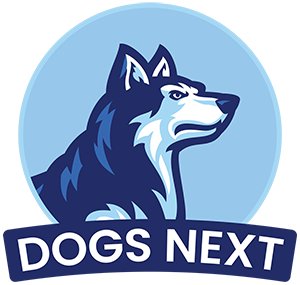Welcoming a new German Shepherd puppy into your home is an exciting time, but it’s important to ensure that your furry friend is properly weaned before separation.
Weaning is a crucial process that helps your puppy develop social and emotional skills while transitioning to solid food. But when can a German Shepherd puppy leave its mother safely?
In most cases, a German Shepherd puppy can leave its mother and littermates between 8 and 12 weeks of age. This is a crucial period for the puppy’s socialization and development, as it learns important social and communication skills from its mother and littermates. It is also during this time that the puppy receives important vaccinations and learns basic house-training skills.
Whether you’re a new owner or an experienced one, this article will provide valuable insights to ensure that your puppy gets the best start in life.
The Ideal Age for Weaning German Shepherd Puppies
The ideal age for weaning German Shepherd puppies is around 6-8 weeks old. This is the time when puppies start developing their teeth and can begin eating solid food. While it’s tempting to separate puppies from their mother as soon as they can eat solid food, it’s important to wait until they have had enough time to develop social and emotional skills.
Weaning too early can result in behavioral problems, such as separation anxiety, fearfulness, and aggression.
To ensure a smooth transition, start introducing solid food to your puppy gradually around 4 weeks old. You can mix puppy food with a milk replacer or water to make a soft and easily digestible mixture. Increase the amount of solid food and decrease the amount of milk replacer gradually over the next few weeks until your puppy is fully weaned at around 8 weeks old.
Signs That a Puppy is Ready to Leave Its Mother
It’s important to wait until your German Shepherd puppy is developmentally ready to leave its mother. Here are some signs that your puppy is ready to leave:
| Signs of Readiness | Description |
| Eating solid food | Your puppy should be able to eat solid food on its own without the need for a milk replacer. |
| Drinking water | Your puppy should be able to drink water without difficulty. |
| Weaning naturally | Your puppy should be gradually weaned off its mother’s milk and not rely on her for food. |
| Socializing with littermates | Your puppy should be interacting with its littermates, playing, and exploring. |
| Independent behavior | Your puppy should be showing signs of independence and exploring its surroundings without constantly seeking comfort from its mother. |
If your puppy shows these signs, it’s a good indication that they are ready to leave their mother and join their new family. It’s important to note that each puppy develops at its own pace, so it’s important to assess each puppy individually and not rush the weaning process.
Factors That Can Affect a Puppy’s Readiness to Leave Its Mother
While 6-8 weeks old is the ideal age for weaning and separation from the mother, several factors can affect a puppy’s readiness to leave, including:
Health
If a puppy is sick or has not received all of its necessary vaccinations, it may not be ready to leave its mother and littermates.
Socialization
Puppies who have not had enough time to socialize with their littermates and humans may have difficulty adjusting to a new home.
Weaning
If a puppy has not been properly weaned, it may not be ready to eat solid food or drink water on its own.
Emotional development
Puppies who have not had enough time to develop social and emotional skills may be at risk for developing behavioral problems.
It’s important to assess each puppy individually and ensure that they are developmentally ready to leave their mother before separating them.
The Importance of Proper Socialization Before Separation
Proper socialization is crucial for a German Shepherd puppy’s development before separation from its mother. Puppies who have had enough time to socialize with their littermates and humans are more likely to adjust well to a new home and have fewer behavioral problems.
To ensure proper socialization, expose your puppy to a variety of people, environments, and experiences before separation. You can do this by taking your puppy on walks, introducing them to new people and animals, and exposing them to different sights and sounds.
Steps to Take When Separating a Puppy from Its Mother
When separating a German Shepherd puppy from its mother, it’s important to take the following steps to ensure a smooth transition:
- Gradual separation: Start by separating the puppy from its littermates for short periods, gradually increasing the duration of separation.
- Familiarity: Bring familiar items, such as blankets or toys, from the mother’s environment to the puppy’s new home to provide comfort and familiarity.
- Nutrition: Make sure to continue feeding the puppy the same type of food and gradually transition to a new diet if necessary.
- Veterinary care: Schedule a veterinary checkup to ensure that the puppy is healthy and up-to-date on all vaccinations.
By following these steps and providing a safe and comfortable environment, you can help your German Shepherd puppy adjust well to its new home after separation from its mother.
Preparing for a New Puppy at Home
Bringing home, a new German Shepherd puppy is an exciting time for any family, but it’s important to be prepared. Before the puppy arrives, make sure to have all necessary supplies, including food, water, food bowls, a crate, bedding, toys, and puppy-safe cleaning supplies.
It’s also a good idea to puppy-proof your home by removing any hazards or dangerous items and setting up a designated area for the puppy to play and sleep.
Common Mistakes to Avoid When Separating a Puppy
Separating a puppy from its mother is a delicate process that should be approached with care. Some common mistakes to avoid include separating the puppy too early, not providing enough socialization and training, and not allowing enough time for the puppy to adjust to its new home. It’s important to remember that a puppy’s first few weeks at home are crucial for its development and well-being.
The Importance of Continued Care and Support After Separation
After separating a puppy from its mother, it’s important to continue providing proper care and support. This includes regular veterinary check-ups, proper nutrition, socialization and training, and plenty of love and attention.
As the puppy grows and develops, it’s important to adjust its care and training accordingly to ensure it grows into a happy and healthy adult dog.
Frequently Asked Questions
Q: Can a puppy leave its mother at 6 weeks old?
Ans: While a puppy can leave its mother at 6 weeks old, it’s generally recommended to wait until the puppy is at least 8 weeks old to ensure proper socialization and development.
Q: Is it better to get a puppy at 8 weeks or 12 weeks?
Ans: It’s generally recommended to get a puppy at 8 weeks old, as this is the ideal age for socialization and bonding with the puppy’s new family. Waiting until 12 weeks may result in missed opportunities for important developmental milestones.
Q: Can a puppy leave at 4 weeks?
Ans: No, it is not recommended for a puppy to leave its mother before it is 8 weeks old. Separation too early can result in a range of behavioral and health issues.
Q: When should puppies leave their mother kennel club?
Ans: The Kennel Club recommends that puppies should not leave their mother before they are 8 weeks old. This is to ensure that they receive proper care and socialization before going to their new homes.
Q: When can a lab puppy leave its mother?
Ans: Lab puppies, like all puppies, should not leave their mother before they are 8 weeks old. This is the ideal age for proper socialization and development.
Q: When can a chihuahua puppy leave its mother?
Ans: Chihuahua puppies, like all puppies, should not leave their mother before they are 8 weeks old. Waiting until this age ensures proper socialization and development for the puppy.
Conclusion
When it comes to separating a German Shepherd puppy from its mother, it’s important to approach the process with care and consideration for the puppy’s well-being. While the ideal age for weaning and separation may vary, it’s important to look for signs of readiness and consider factors that may impact the puppy’s development. Proper socialization and continued care after separation are also crucial for the puppy’s long-term health and happiness.
By understanding the importance of proper weaning and separation, preparing for a new puppy at home, avoiding common mistakes, and providing continued care and support, you can help ensure a smooth transition for your new German Shepherd puppy.
So, if you’re wondering, “When can a German Shepherd puppy leave its mother?” remember that it’s not just about a specific age, but rather about taking the necessary steps to ensure a happy and healthy puppy.

I’m David, an expert contributor and writer, with two furry friends of my own, I know the challenges of raising and caring for dogs. From training to nutrition and health, my goal is to provide valuable insights and advice to help create strong bonds and happy, healthy lives. Find me in Twitter.




